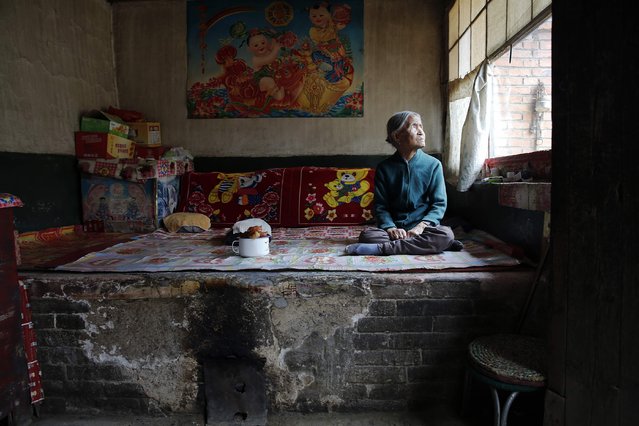
Chinese former “comfort woman” Zhang Xiantu rests on a traditional brick bed in her house in Xiyan Town, Shanxi Province, China, July 18, 2015. “Comfort women” is the Japanese euphemism for women who were forced into prostitution and sexually abused at Japanese military brothels before and during World War Two. Xiantu is the only surviving “comfort woman” of the 16 plaintiffs in Shanxi who sued the Japanese government in 1995 for abducting girls and using them as “comfort women” during World War Two. According to information from China's Commission of Inquiry into the Facts of Comfort Women being Victims, which is based on her own statement during the commission's research, Xiantu was abducted by Japanese soldiers aged 16 and was forced to serve as a “comfort woman” for over 20 days during World War Two. (Photo by Kim Kyung-Hoon/Reuters)
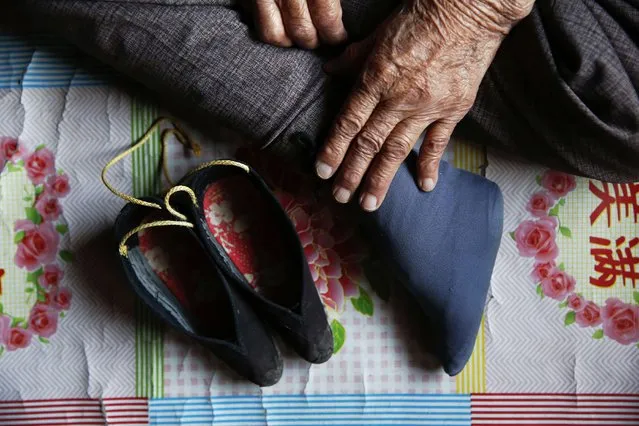
Chinese former “comfort woman” Zhang Xiantu shows her bound feet to a reporter in her house in Xiyan Town, Shanxi Province, China, July 17, 2015. (Photo by Kim Kyung-Hoon/Reuters)
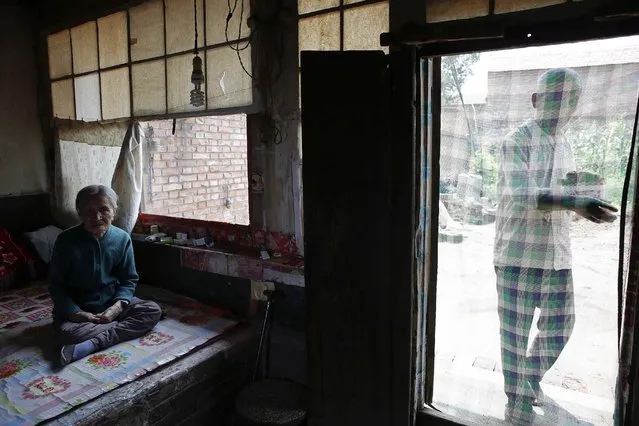
Former Chinese “comfort woman” Zhang Xiantu rests on a traditional brick bed as her son brings her lunch in Xiyan Town, Shanxi Province, China, July 18, 2015. (Photo by Kim Kyung-Hoon/Reuters)
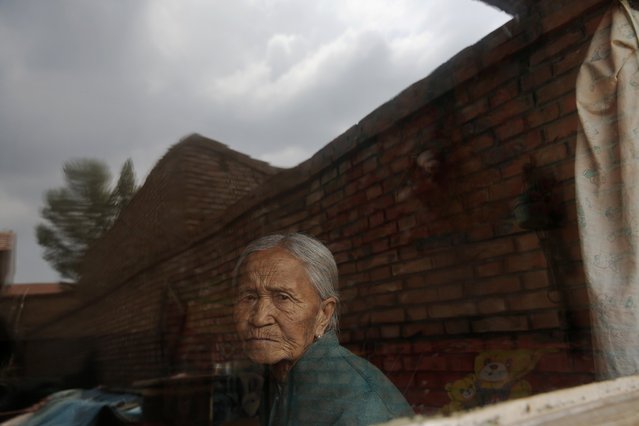
Former Chinese “comfort woman” Zhang Xiantu looks through the window of her house in Xiyan Town, Shanxi Province, China, July 18, 2015. (Photo by Kim Kyung-Hoon/Reuters)
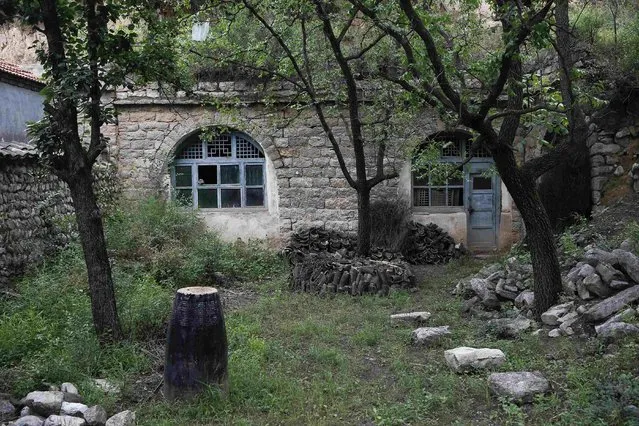
A former fortress where Japanese soldiers kept women they abducted during World War Two is seen abandoned in Xipan village, Shanxi Province, China, July 18, 2015. (Photo by Kim Kyung-Hoon/Reuters)
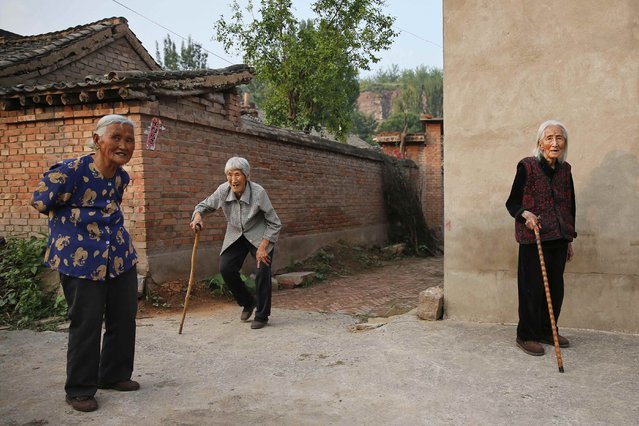
Village women accompany Chinese former “comfort woman” Hao Juxiang (R) as she poses for a picture outside their houses in Gucheng Town, Shanxi Province, China, July 16, 2015. (Photo by Kim Kyung-Hoon/Reuters)

Chinese former “comfort woman” Hao Juxiang scratches her arm inside her house in Gucheng Town, Shanxi Province, China, July 16, 2015. (Photo by Kim Kyung-Hoon/Reuters)
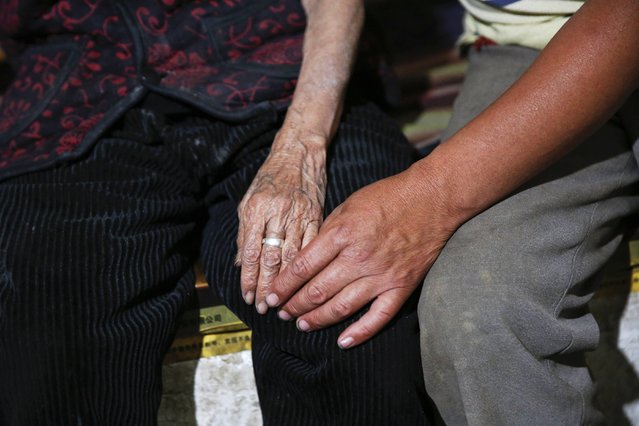
Chinese former “comfort woman” Hao Juxiang holds hands with her son in her house in Gucheng Town, Shanxi Province, China, July 16, 2015. (Photo by Kim Kyung-Hoon/Reuters)
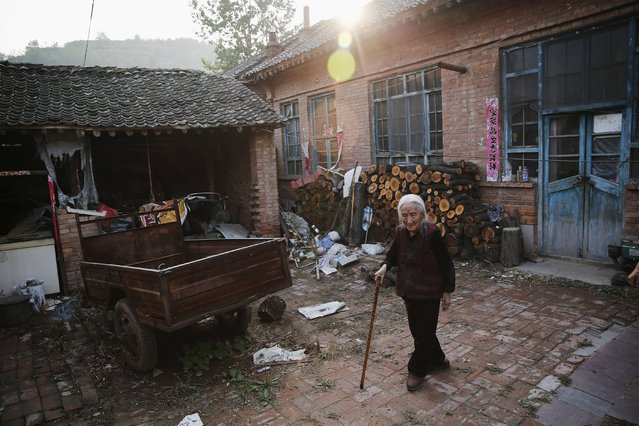
Chinese former “comfort woman” Hao Juxiang walks at her house in Gucheng Town, Shanxi Province, China, July 16, 2015. (Photo by Kim Kyung-Hoon/Reuters)
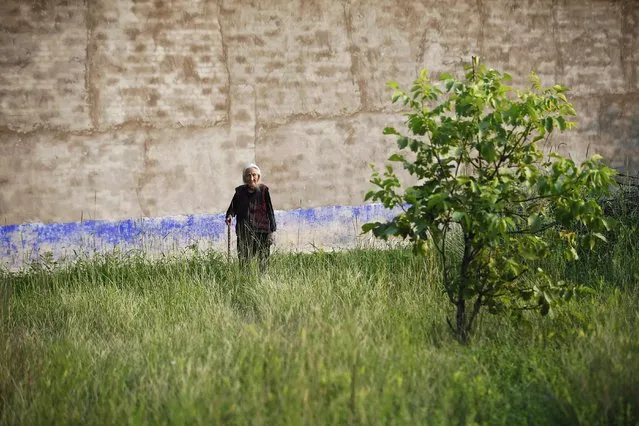
Chinese former “comfort woman” Hao Juxiang takes a walk around her house in Gucheng Town, Shanxi Province, China, July 16, 2015. (Photo by Kim Kyung-Hoon/Reuters)
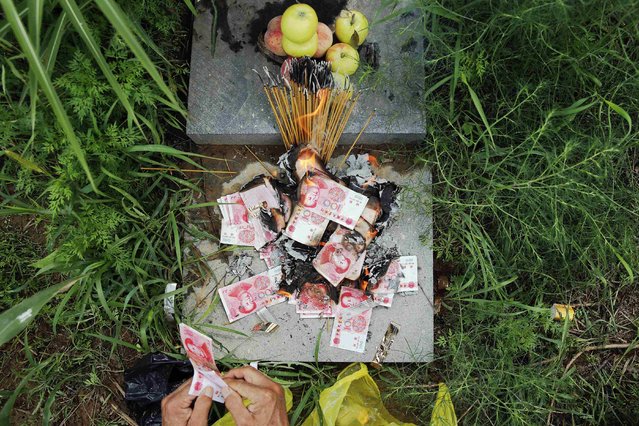
Zhang Shuangbing, the independent researcher about Chinese “comfort women” during World War Two, burns incense sticks and fake money after bringing reporters to the tomb of Liu Mianhuan at a mountain in Xipan village, Shanxi Province, China, July 18, 2015. (Photo by Kim Kyung-Hoon/Reuters)
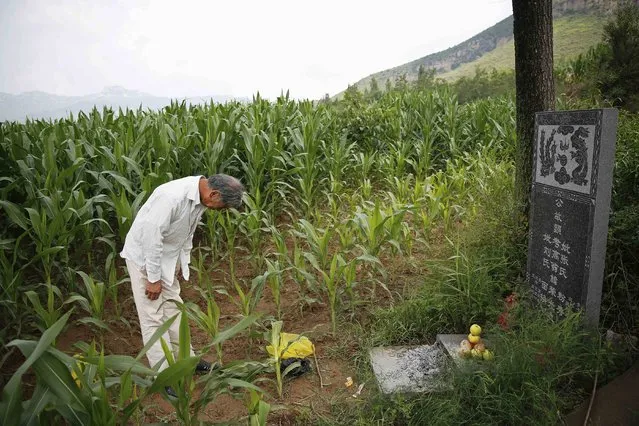
Zhang Shuangbing, an independent researcher about Chinese “comfort women” during World War Two, bows at the tomb of Liu Mianhuan after showing it to reporters at a mountain in Xiyan Town, Shanxi Province, China, July 18, 2015. (Photo by Kim Kyung-Hoon/Reuters)

Chinese former “comfort woman” Ren Lane poses in front of a poster of China's late Chairman Mao Zedong pasted on the wall of a room that is not in use at her house in Gucheng Town, Shanxi Province, China, July 17, 2015. (Photo by Kim Kyung-Hoon/Reuters)
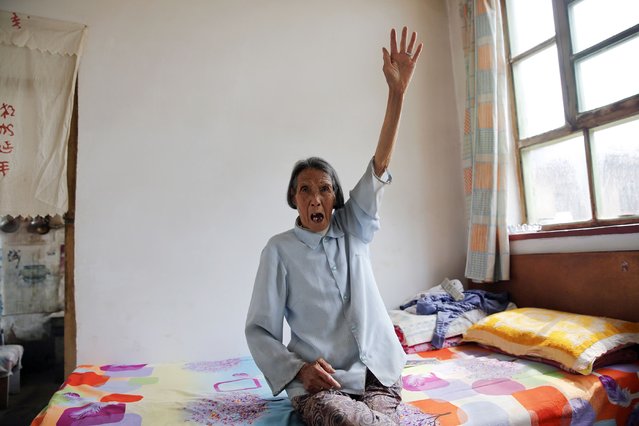
Chinese former “comfort woman” Ren Lane gestures as she speaks about her experience as a s*x slave, at her house in Gucheng Town, Shanxi Province, China, July 17, 2015. (Photo by Kim Kyung-Hoon/Reuters)
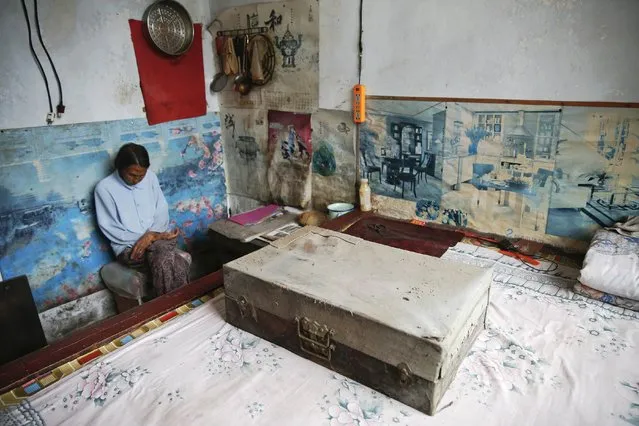
Chinese former “comfort woman” Ren Lane sits behind a suitcase with a shroud, which she prepared for her death, after showing it to reporters at her house in Gucheng Town, Shanxi Province, China, July 17, 2015. (Photo by Kim Kyung-Hoon/Reuters)
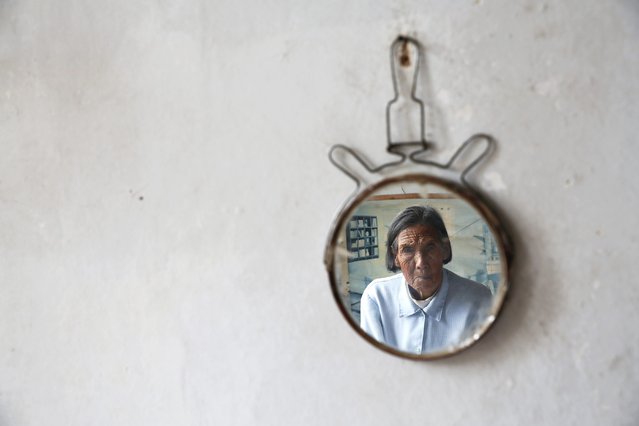
Chinese former “comfort woman” Ren Lane is seen in a small mirror at her house in Gucheng Town, Shanxi Province, China, July 17, 2015. (Photo by Kim Kyung-Hoon/Reuters)
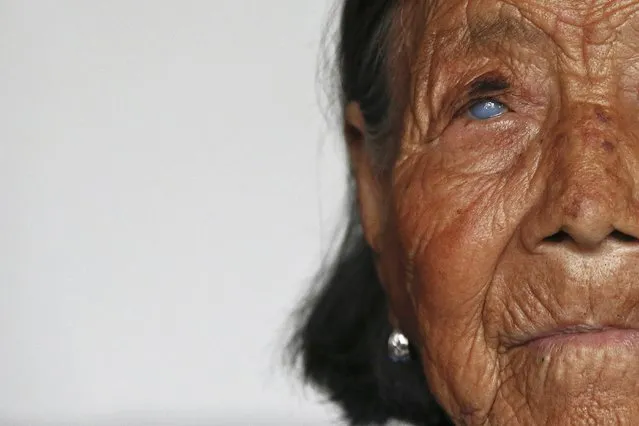
Chinese former “comfort woman” Hao Yuelian, whose eye is affected by cataract, passes the time at her house in Taiyuan, Shanxi Province, China, July 16, 2015. (Photo by Kim Kyung-Hoon/Reuters)

Former Chinese “comfort woman” Hao Yuelian sits on her bed under pictures of babies at her house in Taiyuan, Shanxi Province, China, July 16, 2015. (Photo by Kim Kyung-Hoon/Reuters)
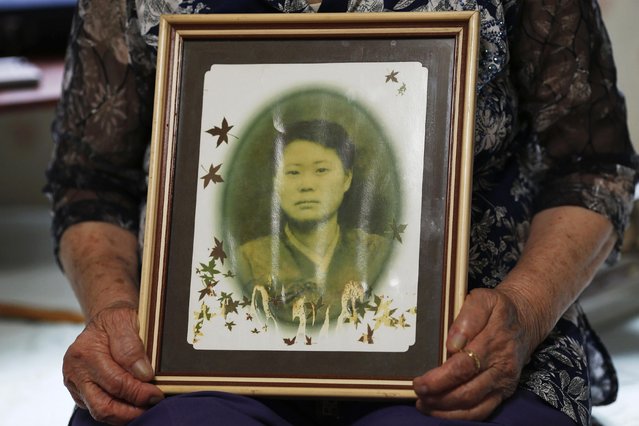
Former South Korean “comfort woman” Lee Ok-sun shows an old picture of herself in her room at the “House of Sharing”, a special shelter for “comfort women”, in Gwangju, South Korea, July 24, 2015. The shelter is run by an NGO. (Photo by Kim Kyung-Hoon/Reuters)
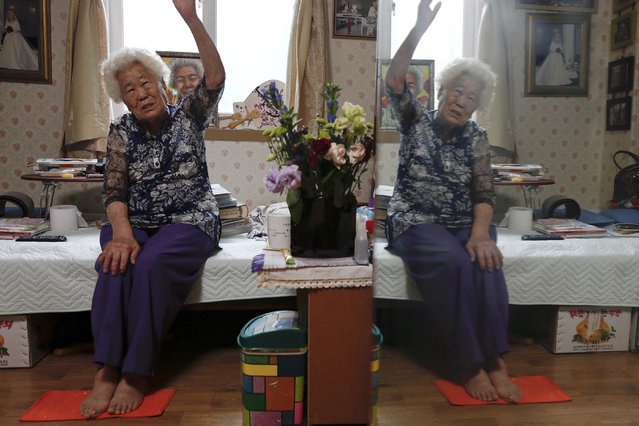
South Korean former “comfort woman” Lee Ok-sun recalls how she was taken to a Japanese military “comfort station” during World War Two, in her room at the “House of Sharing”, a special shelter for former “comfort women”, in Gwangju, South Korea, July 24, 2015. (Photo by Kim Kyung-Hoon/Reuters)
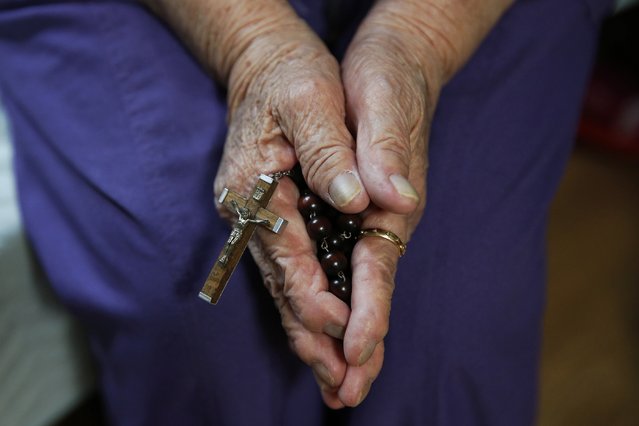
Former South Korean “comfort woman” Lee Ok-sun, who is a Roman Catholic, holds her crucifix in her room at the “House of Sharing”, a special shelter for former “comfort women”, in Gwangju, South Korea, July 24, 2015. (Photo by Kim Kyung-Hoon/Reuters)
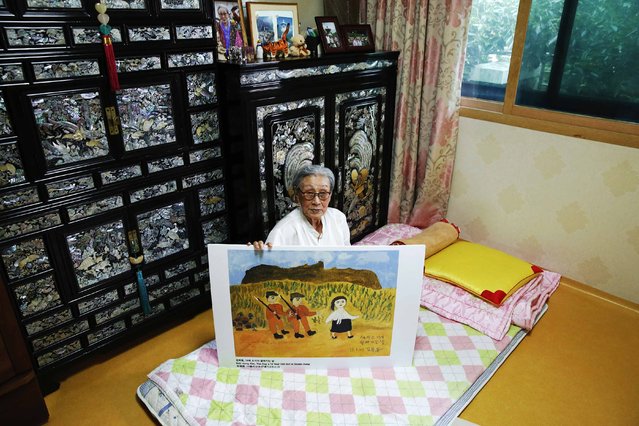
Former South Korean “comfort woman” Kim Bok-dong poses with a copy of her painting titled “The Day A 14-year-old Girl Is Stolen Away” in her room at “Our Home”, a special shelter for former “comfort women”, in Seoul, South Korea, July 23, 2015. (Photo by Kim Kyung-Hoon/Reuters)
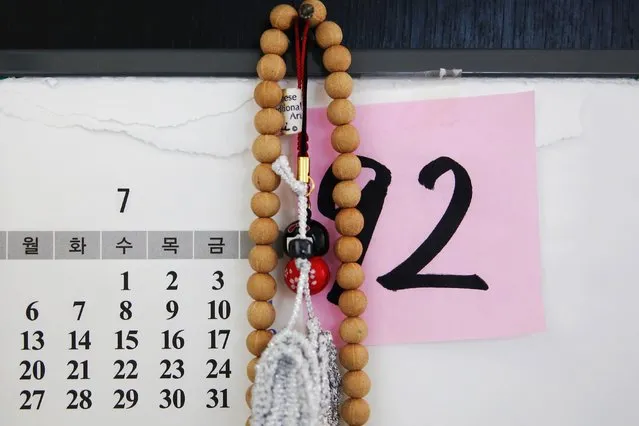
A Buddhist rosary hangs over a calendar and a piece of paper on which South Korean former “comfort woman” Park Ok-sun's current Korean nominal age “92” is written, in her room at the “House of Sharing”, a special shelter for former “comfort women”, in Gwangju, South Korea July 24, 2015. (Photo by Kim Kyung-Hoon/Reuters)
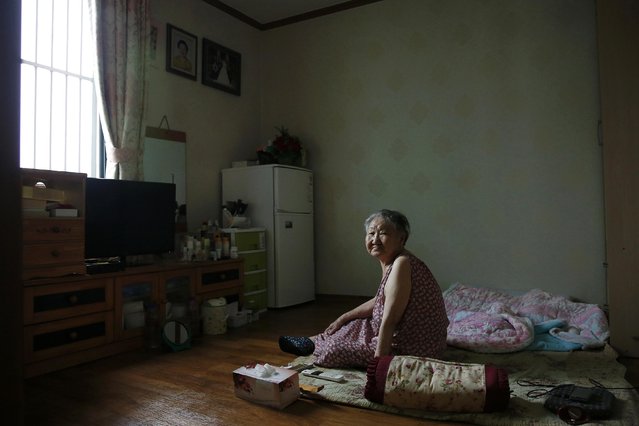
South Korean former “comfort woman” Gil Won-ok sits in her room at the “Our Home” shelter for former “comfort women” in Seoul, South Korea, July 23, 2015. (Photo by Kim Kyung-Hoon/Reuters)
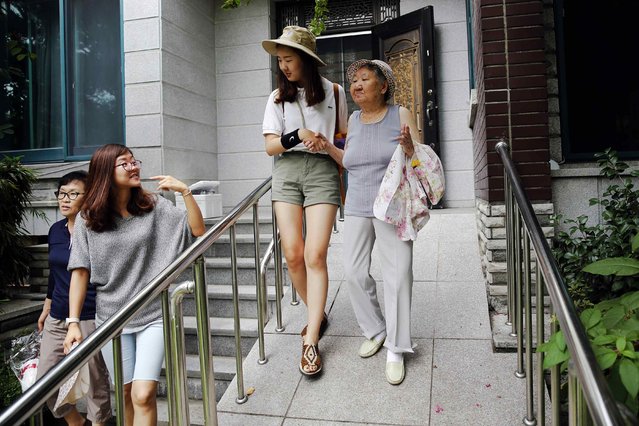
South Korean former “comfort woman” Gil Won-ok is helped by a volunteer as she heads to the weekly Wednesday protest demanding an apology and compensation from the Japanese government in Seoul, South Korea, July 22, 2015. (Photo by Kim Kyung-Hoon/Reuters)
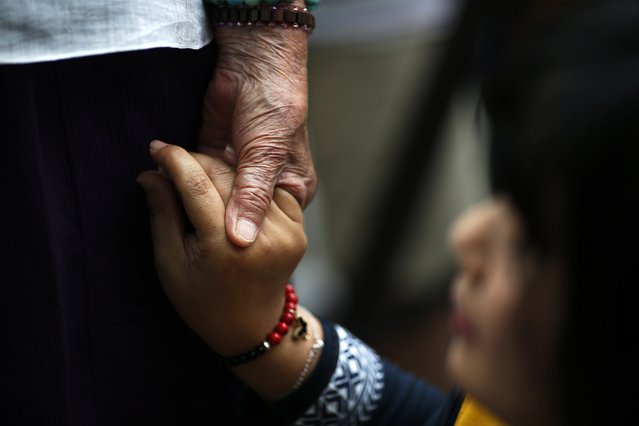
Former South Korean “comfort woman” Kim Bok-dong (L) holds hands with an activist while she makes a speech during the weekly Wednesday protest in front of the Japanese embassy demanding for an apology and compensation from the Japanese government in Seoul, South Korea, July 22, 2015. (Photo by Kim Kyung-Hoon/Reuters)
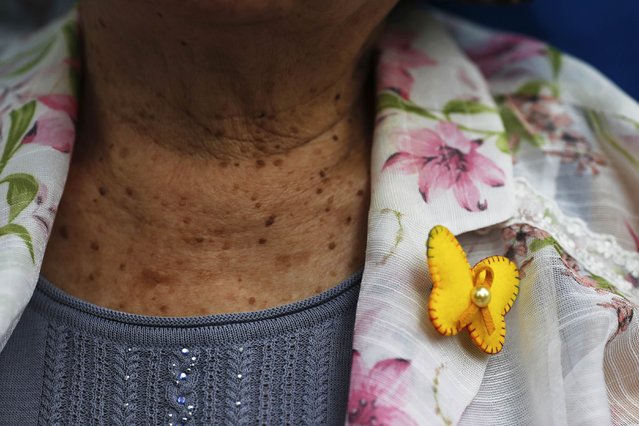
South Korean former “comfort woman” Gil Won-ok wears a badge in the shape of the butterfly during the weekly Wednesday protest demanding for an apology and compensation from the Japanese government in Seoul, South Korea, July 22, 2015. The butterfly is a symbol of the Butterfly Fund, which helps women across the world affected by wartime sexual violence. (Photo by Kim Kyung-Hoon/Reuters)
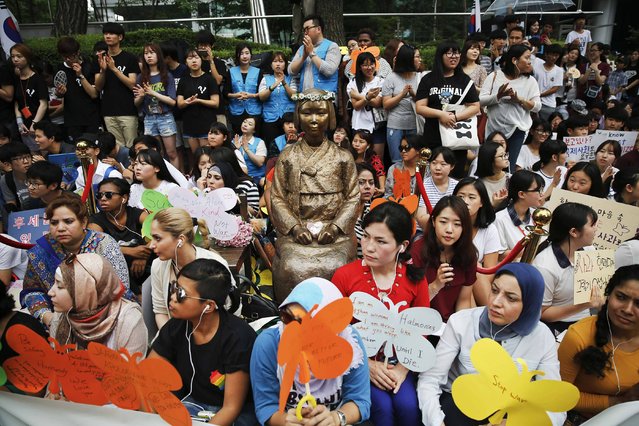
Demonstrators sit around a “comfort woman” statue during the weekly Wednesday protest demanding for an apology and compensation from the Japanese government in Seoul, South Korea, July 22, 2015. (Photo by Kim Kyung-Hoon/Reuters)
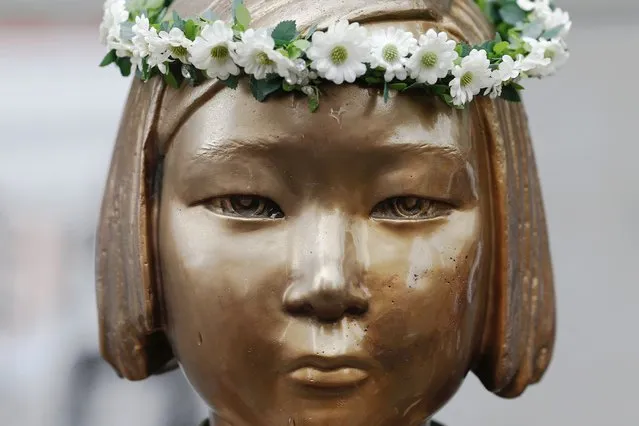
Flowers are placed on a “comfort woman” statue during the weekly Wednesday protest in front of Japanese embassy demanding for an apology and compensation from Japanese government in Seoul, South Korea, July 22, 2015. (Photo by Kim Kyung-Hoon/Reuters)
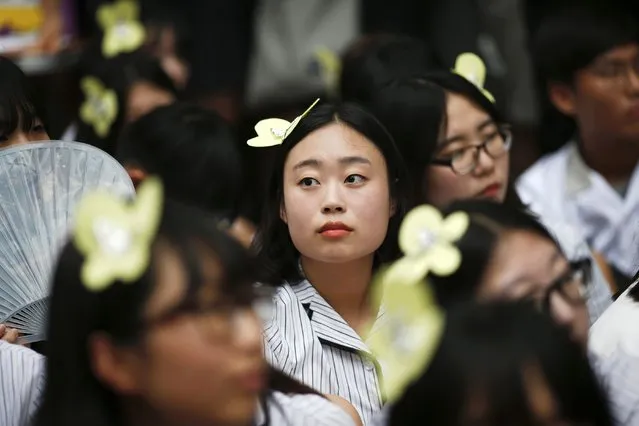
School girls wearing hairpins in the shape of a butterfly take part in the weekly Wednesday protest in front of the Japanese embassy demanding for an apology and compensation from Japanese government in Seoul, South Korea, July 22, 2015. The butterfly is a symbol of the Butterfly Fund, which helps women across the world affected by wartime sexual violence. (Photo by Kim Kyung-Hoon/Reuters)
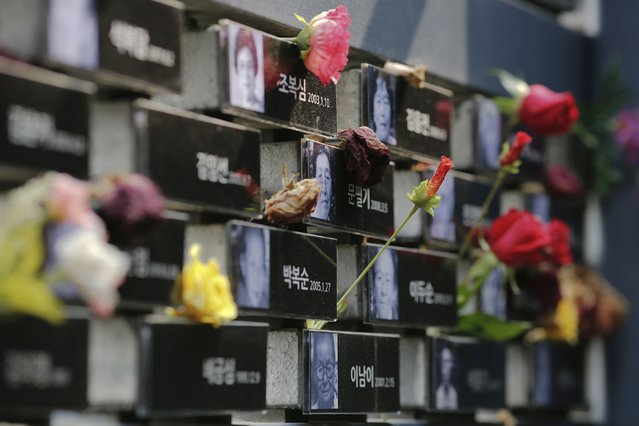
Flowers are placed on a memorial wall commemorating the late former South and North Korean “comfort women” at the War and Women's Human Rights Museum in Seoul, South Korea, July 22, 2015. (Photo by Kim Kyung-Hoon/Reuters)
13 Aug 2015 11:06:00,
post received
0 comments
